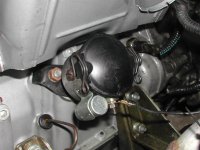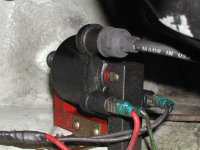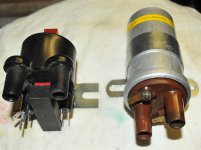Greetings All,
Whilst having a root around my engine the other day I noted that the 126 'lost spark' ignition system fitted to my 500 does not seem to have a Ballast Resistor wired in???? Try as I might after further rooting here and there, in and out, front and back the damn thing is missing!!!!! Now, not having the item is one thing, but knowing where to fit a new one is another problem! I wish to avoid any damage to the dizzy contacts and the plugs so does anyone have a wiring diagram to suit and the name of a supplier - or can I do without the Ballast altogether???????? Thoughts????????
Ian.
Whilst having a root around my engine the other day I noted that the 126 'lost spark' ignition system fitted to my 500 does not seem to have a Ballast Resistor wired in???? Try as I might after further rooting here and there, in and out, front and back the damn thing is missing!!!!! Now, not having the item is one thing, but knowing where to fit a new one is another problem! I wish to avoid any damage to the dizzy contacts and the plugs so does anyone have a wiring diagram to suit and the name of a supplier - or can I do without the Ballast altogether???????? Thoughts????????
Ian.







